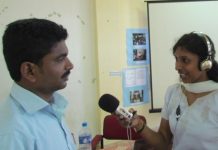
The primary role of a journalist in covering a news story is to uncover verifiable facts, provide context and present the information to the audience.
The first thing editors demand from their journalists as part of that process is accuracy. According to an old journalistic slogan, the second thing editors want is accuracy. And the third thing is accuracy, too.
The point is simple: above every other consideration, everything you write must be correct. No exceptions can be allowed. A news story must be based on facts and those facts must be accurate in every detail. And the facts we present need to be easily understood and not misleading – clarity is essential.
Presenting facts that can be proven to be true enables the audience to assess the information and draw their own understanding of what is ‘the truth’.
Journalists are merely facilitators in the process of finding ‘the truth’, and we do this by providing the essential factual foundation for public knowledge and discourse.
Journalists have an important role in society. While the audience is getting on with its lives, we have the privileged job of uncovering and researching the news stories that could have an impact on everyone who accesses the news we produce.
We knock on doors, make phone calls, send emails, and sift through documents to find the facts that the audience needs to make sense of what is happening.
In some ways we provide news about the things the audience wants to know about as well as news about things they probably need to know about but don’t know they need to know about. And all that news is dependent on the accurate presentation of verified facts.
But it goes further than that. We also need to add context so that the audience has a greater understanding about what lies behind the news.
Adding context is simply including more proven facts relevant to the original story. Doing so helps answer some of the questions the audience might have and so provides a more informed understanding.
By adding factual context around what has been proven to be true, journalists paint a fuller, more understandable picture for the audience. It’s about going beyond the immediate who, what, when, where, why and how, to try to explain why it matters.
In doing so we seek ‘the truth’ but it’s up to the audience to digest the information we publish and decide what ‘the truth’ is.
Journalists present the evidence for the jury (the audience) to assess; we are simply informing the public debate so that the audience can form their own opinions, analyse situations, take an intelligent part in discussions, and make educated choices.
So the job of the journalist is to investigate facts thoroughly through rigorous research, cross-referencing information, identifying credible sources, and checking everything we uncover to ensure accuracy.
We must try to eliminate any personal biases or agendas and ensure we offer diverse perspectives where appropriate.
A journalist’s goal is to get as close to the truth of a situation as possible, while recognising that truth can be subjective and individual perceptions can be influenced by perspectives, beliefs and values.
So the journalist aims to establish and communicate only what can be demonstrated and proven to be factual.
Many events have multiple layers and interpretations. A journalist’s role is to present the factual building blocks that allow the audience to understand this complexity, rather than offering a single, definitive ‘truth’.
The understanding of an event can evolve as more facts emerge. A journalist’s work contributes to this evolving understanding.
While the pursuit of truth in a broader sense might be the underlying aspiration, the practical and ethical role of a journalist is primarily to find verifiable facts, provide context, and present them fairly to the audience.
This empowers the public to assess the information and arrive at their own understanding of what constitutes ‘the truth’.
Journalists act as facilitators in this process, providing the essential factual foundation for public knowledge and discourse.








